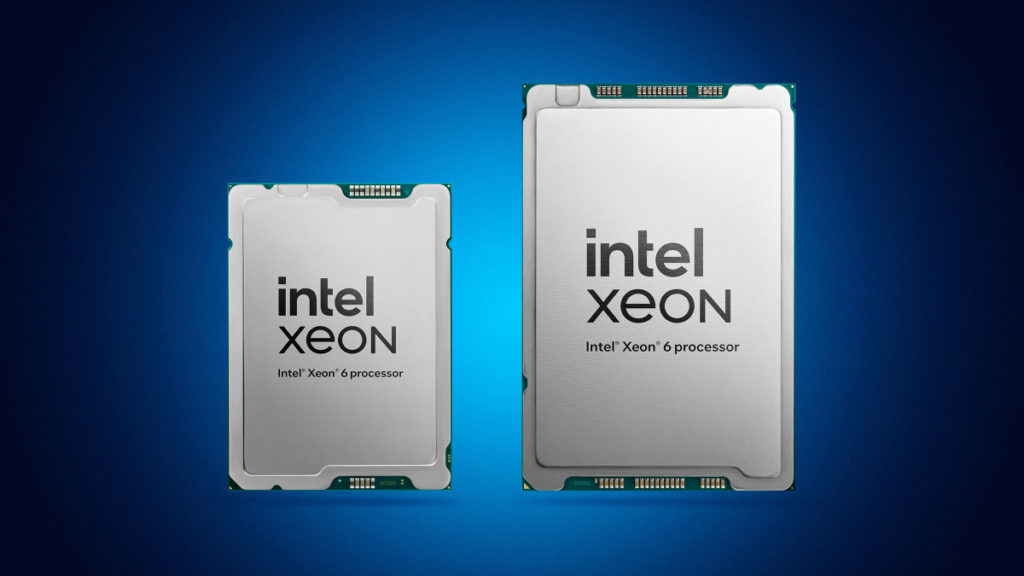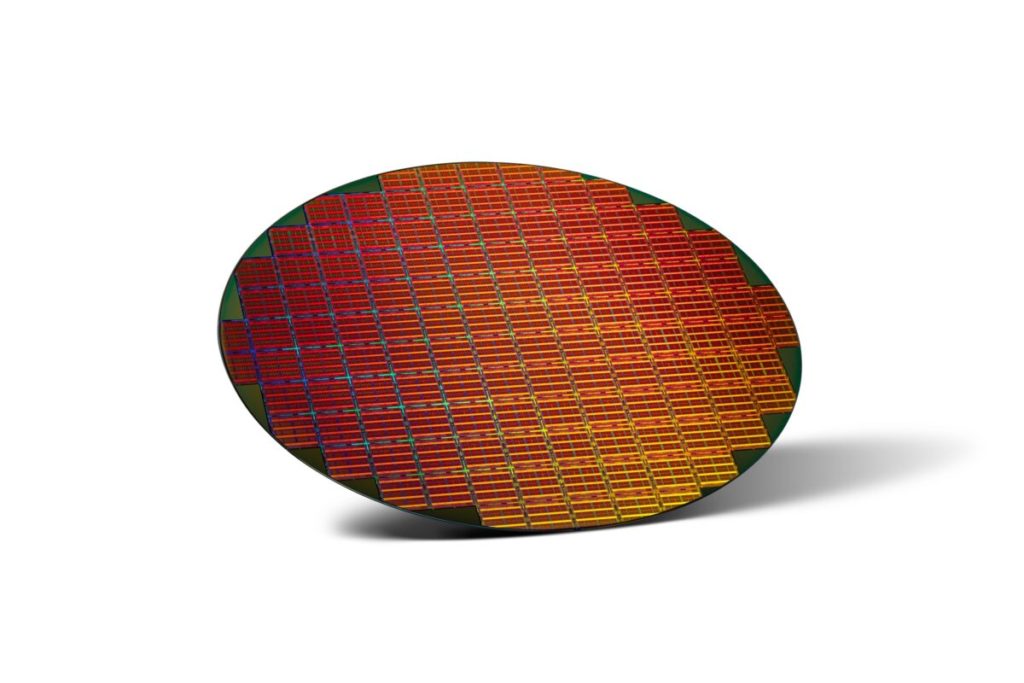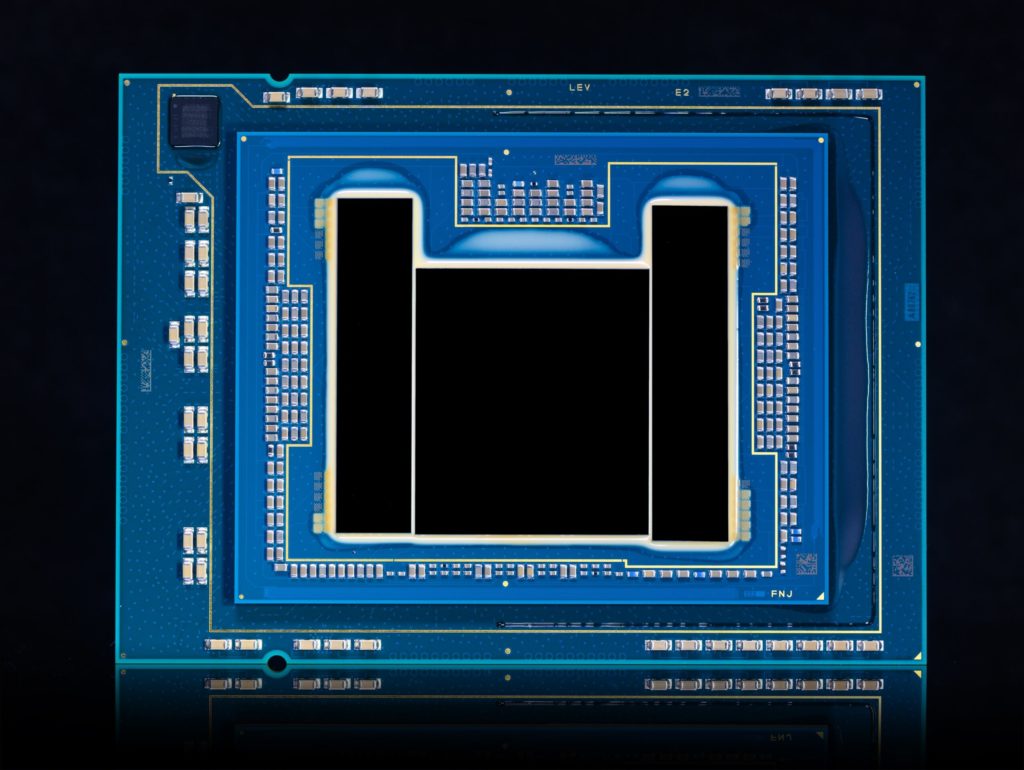(PR) As enterprises modernize infrastructure to meet the demands of next-gen workloads like AI, high-performing and efficient compute is essential across the full spectrum – from data centers to networks, edge and even the PC. To address these challenges, Intel today launched its Xeon 6 processors with Performance-cores (P-cores), providing industry-leading performance for the broadest set of data center and network infrastructure workloads and best-in-class efficiency to create an unmatched server consolidation opportunity.
More: Ecosystem Achieves Power Efficiency Breakthrough on Xeon 6 with E-Cores | Intel Unveils High-Performance, Power-Efficient Ethernet Solutions | Customers and Ecosystem Partners Showcase Support for Intel Xeon 6 with Performance-Cores (Quote Sheet) | Intel Xeon 6 Processors (Press Kit)
“We are intensely focused on bringing cutting-edge leadership products to market that solve our customers’ greatest challenges and help drive the growth of their business,” said Michelle Johnston Holthaus, interim co-CEO of Intel and CEO of Intel Products. “The Xeon 6 family delivers the industry’s best CPU for AI and groundbreaking features for networking, while simultaneously driving efficiency and bringing down the total cost of ownership.”
Introducing New Intel Xeon 6 Processors
Intel’s latest Xeon 6 processors feature significant advancements in both data center and networking portfolios.
- The Intel® Xeon® 6700/6500 series processor with P-cores is the ideal CPU for modern data centers, offering the perfect balance between performance and energy efficiency. Delivering an average of 1.4x better performance than the previous generation3 across a wide range of enterprise workloads, Xeon 6 is also the foundational central processing unit (CPU) for AI systems, pairing exceptionally well with a GPU as a host node CPU. When compared to 5th Generation AMD EPYC processors, Xeon 6 provides up to 1.5x better performance in AI inference on chip using one-third fewer cores4. Xeon 6 processors also enable substantial performance-per-watt efficiency, allowing for 5:1 consolidation of a 5-year-old server on average5, with potential for up to 10:1 in certain use cases, resulting in up to 68% savings in total cost of ownership (TCO)6.
- The Intel Xeon 6 for network and edge is a system-on-chip (SoC) designed for high performance and power efficiency. It leverages Intel’s built-in accelerators for virtualized radio access networks (vRAN), media, AI and network security, addressing the growing demand for network and edge solutions in an AI-driven world. Xeon 6 SoCs deliver up to 2.4x the RAN capacity7 and a 70% improvement in performance-per-watt compared to previous generations8 thanks to Intel vRAN Boost. Additionally, Xeon 6 is the industry’s first server SoC with a built-in media accelerator — the Intel® Media Transcode Accelerator — enabling up to 14x performance per watt gain versus Intel Xeon 6538N 9.
The World’s Best CPU for AI
As AI adoption continues to accelerate, organizations are projected to spend up to $153 billion on generative AI (GenAI) by 2027, with total spending for machine learning and analytics reaching $361 billion, according to IDC. Intel Xeon 6 is optimized to capture a significant share of this growing market, delivering leadership performance in traditional machine learning, smaller GenAI models and GPU-accelerated workloads in a host CPU capacity. Intel is collaborating with silicon, software and solution providers to enable the AI ecosystem, reinforcing Xeon 6 as the go-to CPU for AI systems.
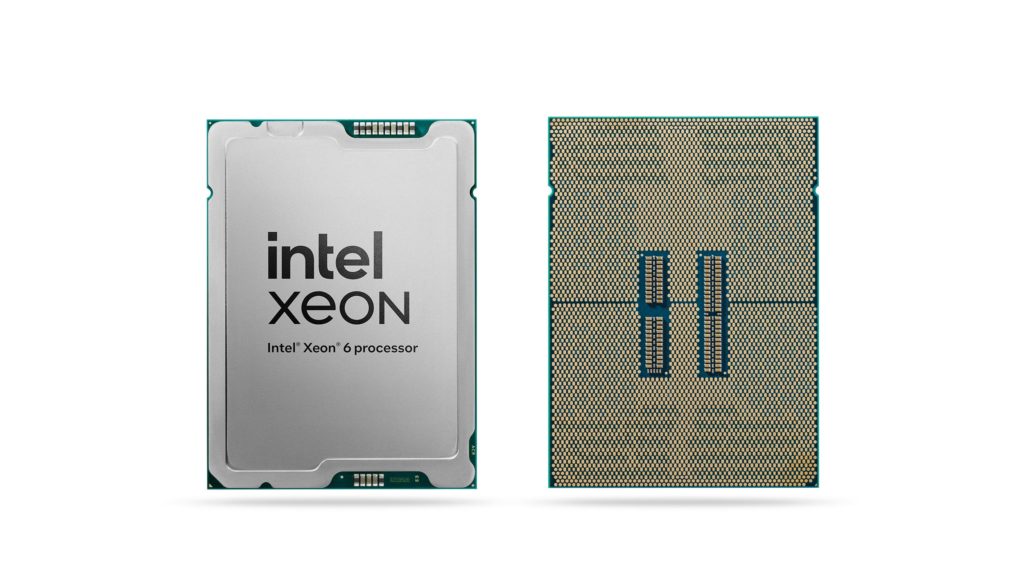
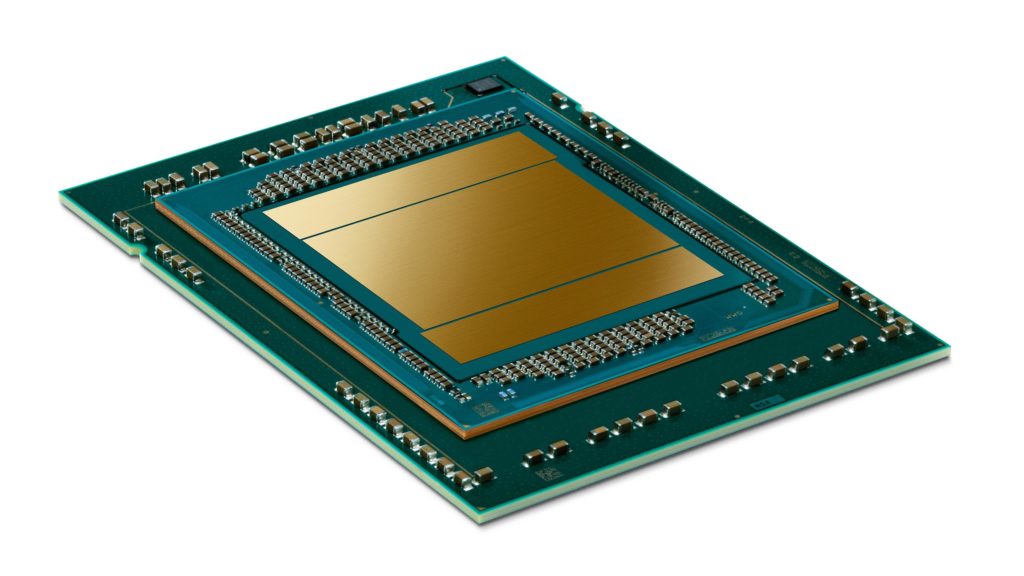
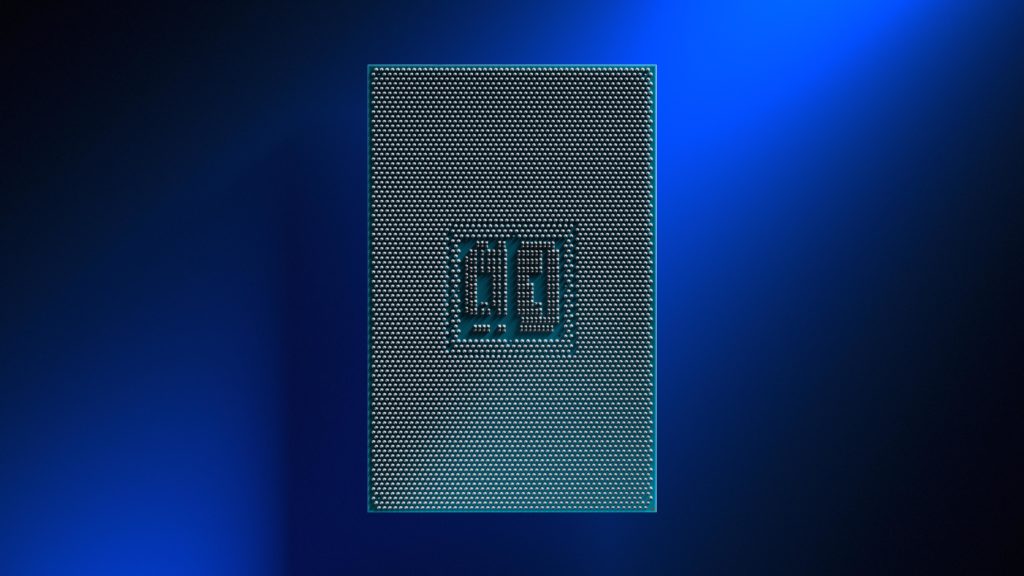
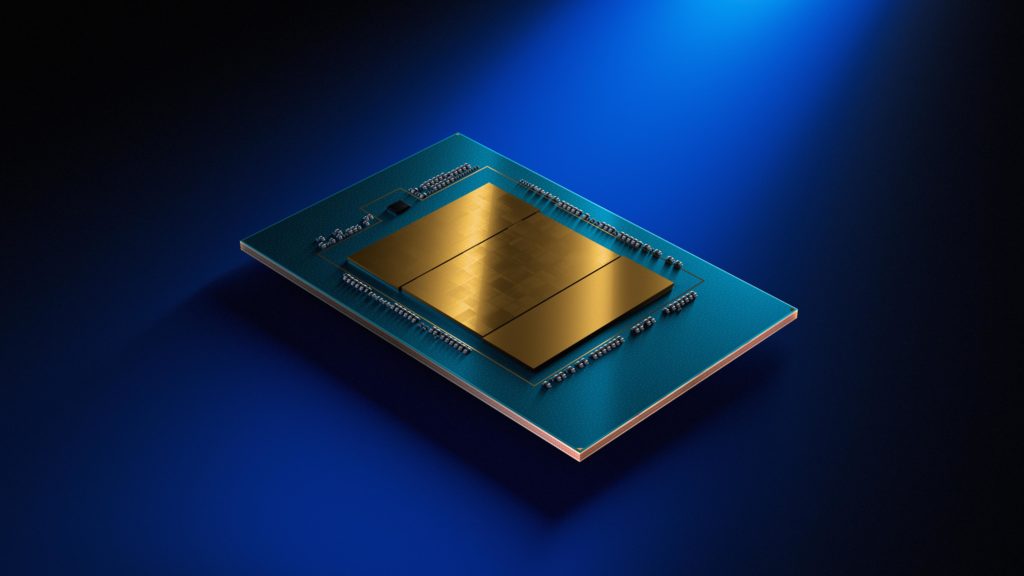
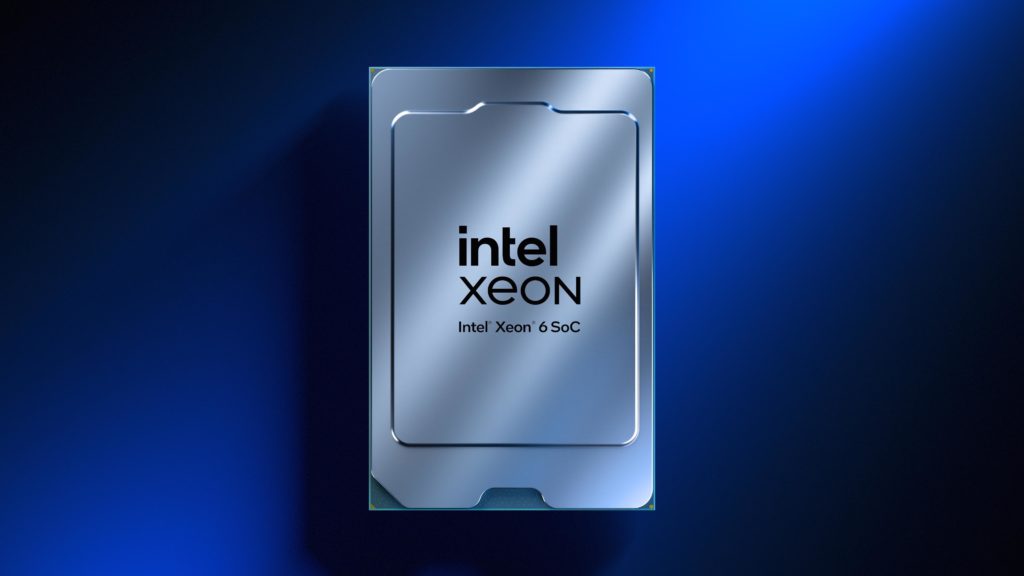
Leadership Performance for Modern Telecommunications Networks
With 5G and AI poised to transform connectivity, traditional network optimization strategies are no longer sufficient. To unlock the full potential of next-gen networks and connectivity, telecom operators are adopting technologies like network slicing, AI-powered radio controllers and cloud-native architectures. By leveraging Intel’s unified Xeon platform, operators can dynamically optimize workloads, reduce costs and build scalable, flexible networks that adapt in real time to changing customer demands, traffic patterns and market shifts.
Key performance highlights of the Intel Xeon 6 SoC include:
- Webroot CSI upload model inference is up to 4.3x faster than Intel Xeon D-2899NT10.
- AI RAN performance per core is improved by up to 3.2x compared with the previous generation with vRAN Boost11.
- A 38-core system supports int8 inferencing of up to 38 simultaneous camera streams on a video edge server12.
New Advanced Ethernet Solutions
Intel also unveiled two new Ethernet controller and network adapter product lines to address the growing demands of enterprise, telecommunications, cloud, high performance computing (HPC), edge and AI applications. Initial availability includes dual-port 25GbE PCIe and OCP 3.0-compliant adapters, with additional configurations expected this year.
- The Intel® Ethernet E830 Controllers and Network Adapters deliver up to 200GbE bandwidth, flexible port configurations and advanced precision time capabilities, including Precision Time Measurement (PTM). These adapters are optimized for high-density virtualized workloads, offering robust security features and performance.
- The Intel® Ethernet E610 Controllers and Network Adapters provide 10GBASE-T connectivity optimized for control plane operations. The 610 series offers outstanding power efficiency, advanced manageability and robust security features that simplify network administration and ensure maximum network integrity.
The combination of Intel Xeon 6 processors and high-performance Ethernet connectivity forms a powerful foundation for businesses to accelerate innovation and gain a competitive advantage.
Broad OEM Partner and Ecosystem Adoption
Intel Xeon 6 processors have already seen broad adoption across the data center ecosystem, with more than 500 designs available now or in progress. Server systems, software solutions and services will be available around the globe from leading companies such as AT&T, Verizon, Cisco, Dell Technologies, Samsung, Ericsson, Hewlett Packard Enterprise, Lenovo, Microsoft, Nutanix, Nvidia, Oracle, Red Hat, SAP, Supermicro, Vodafone, VMware and Wind River, among many others.
Notices & Disclaimers
1 See [7A29] at intel.com/processorclaims: Intel® Xeon® 6. Results may vary.
2 See [7ND21] at intel.com/processorclaims: Intel® Xeon® 6. Results may vary.
3 See [7G20] at intel.com/processorclaims: Intel® Xeon® 6. Results may vary.
4 See [7A220] at intel.com/processorclaims: Intel® Xeon® 6. Results may vary.
5 See [Geomean 7T21-7T26] at intel.com/processorclaims: Intel® Xeon® 6. Results may vary.
6 See [7T21] at intel.com/processorclaims: Intel® Xeon® 6. Results may vary.
7 See [7ND21] at intel.com/processorclaims: Intel® Xeon® 6. Results may vary.
8 See [7ND22] at intel.com/processorclaims: Intel® Xeon® 6. Results may vary.
9 See [7ND32] at intel.com/processorclaims: Intel® Xeon® 6. Results may vary.
10 See [7ND30] at intel.com/processorclaims: Intel® Xeon® 6. Results may vary.
11See [7ND34] at intel.com/processorclaims: Intel® Xeon® 6. Results may vary.
12 See [7ND20] at intel.com/processorclaims: Intel® Xeon® 6. Results may vary.
Performance varies by use, configuration and other factors. Learn more on the Performance Index site.
Performance results are based on testing as of dates shown in configurations and may not reflect all publicly available updates. See backup for configuration details. No product or component can be absolutely secure. Your costs and results may vary. Intel technologies may require enabled hardware, software or service activation.
(PR) What’s New: Intel today showcased how Intel® Xeon® 6 processors with Efficient-cores (E-cores) have dramatically accelerated time-to-market adoption for the company’s solutions in collaboration with the ecosystem. Since product introduction in June 2024, 5G core solution partners have independently validated a 3.2x performance improvement1, a 3.8x performance per watt increase2 and, in collaboration with the Intel® Infrastructure Power Manager launched at MWC 2024, a 60% reduction in run-time power consumption3.
“As 5G core networks continue to build out using Intel Xeon processors, which are deployed in the vast majority of 5G networks worldwide, infrastructure efficiency, power savings and uncompromised performance are essential criteria for communication service providers (CoSPs). Intel is pleased to announce that our 5G core solution partners have accelerated the adoption of Intel Xeon 6 with E-cores and are immediately passing along these benefits to their customers. In addition, with Intel Infrastructure Power Manager, our partners have a run-time software solution that is showing tremendous progress in reducing server power in CoSP environments on existing and new infrastructure.” – Alex Quach, Intel vice president and general manager of Wireline and Core Network Division
Why It Matters: Shortening the time to market is invaluable for CoSPs looking to adopt the newest platforms to reap increased energy consumption benefits and reduce their infrastructure footprints while maintaining a pinnacle level of performance. These all represent major challenges that CoSPs face as they modernize networks.
How They Work Better Together: Historically, the ecosystem of virtualized 5G core solutions has relied on certifying solution software on new processor platforms to increase performance and power efficiency. With the Intel Infrastructure Power Manager, solution providers can take advantage of software from Intel to more fully realize the benefits that Intel Xeon processors bring to reducing real-time power consumption. In this way, performance and power-efficiency improvements from new hardware introductions are augmented with additional significant power-saving capabilities from easy-to-deploy software.
About CPU Innovations:Intel’s Xeon platforms set the standard in 5G cloud-native core, providing superior total cost of ownership (TCO) and comprehensive power management. Major telecom equipment manufacturers and independent software vendors rely on Intel Xeon processors and architecture to optimize and unleash proven power savings for a more sustainable future.
BT Group: BT Group is the U.K.’s leading provider of fixed and mobile telecommunications and related secure digital products, solutions and services. It aims to accelerate growth through responsible, inclusive and sustainable tech. BT Group’s close collaboration with Intel delivers differentiated 5G infrastructure that is high-performance, cost-optimized and power-efficient. The company says it expects to leverage the capabilities of Intel Xeon 6 with E-cores to enable innovative services for its customers, while simultaneously reducing network energy footprint.
Dell Technologies: The Dell PowerEdge R670 with Intel Xeon 6 processors with E-cores offers an air-cooled, compute-dense server designed to improve performance for 5G core networks. Dell Technologies collaborated with Intel to significantly improve communications service providers time to market, while helping operators reduce infrastructure cost and footprint.
Ericsson: Ericsson Cloud Native Infrastructure Solution (CNIS) enables servers based on Intel Xeon 6 processors with E-cores as a system-verified solution to Ericsson’s entire dual-mode 5G core application portfolio. Ericsson’s packet core products with high-traffic demands will be the leading applications to use it. This helps communication service providers reduce TCO for mobile broadband and fixed wireless deployments that demand high traffic throughput and performance. The close collaboration between Intel and Ericsson has helped to significantly reduce time-to-market introduction of new technology from years to months, and Ericsson’s software optimizations have produced a 3.8x improvement in performance-per-watt2 versus current CoSPs’ deployed configurations.
Hewlett Packard Enterprise: Hewlett Packard Enterprise is maintaining its focus on providing world-class telco platforms and has accelerated its validation cycles to offer HPE ProLiant Compute Gen 12 based on Intel Xeon 6 processors with E-cores. These performance-dense servers consume less power-per-bit than prior generations and will enable operators to continue addressing network growth while reducing their carbon footprint, improving security and simplifying operations.
NEC: NEC provides significant improvement in performance per watt and higher subscriber density for 4G/5G converged core and UPF with Intel Xeon 6 processors with E-cores. NEC will continue to contribute to achieving carbon neutrality through collaboration with Intel.
Nokia: Nokia shows its most power-efficient solution for 5G Packet Core using Intel Xeon 6 processors with E-cores, achieving a 60% reduction in run-time power consumption3 on commercial servers versus existing deployments. Nokia collaborated with Intel to integrate E-core functionalities on its 5G Packet Core NF to scale into more cores, improve performance, and provide operators with a more load- and power-aware solution utilizing Intel Infrastructure Power Manager.
NTT Docomo: NTT Docomo is evaluating options for building its 5G network, focusing on the key criteria of performance per watt and subscriber density. NTT Docomo believes that Intel Xeon 6 processors with E-cores can effectively address the challenges in continuing to expand and enhance its network, while also reducing power consumption and data center footprint.
Samsung: Samsung’s next-generation release of Samsung Cloud Native Core, planned for the second quarter of 2025, will feature Intel Xeon 6 processors with E-cores to deliver 3.2x improvement in performance1 and significant density improvement.
SK Telecom: SK Telecom, as a major step in delivering on its commitment to network sustainability and optimized total cost of ownership, will deploy Hewlett Packard Enterprise DL340 servers based on Intel Xeon 6 processors with E-cores for its 5G core deployments in 2025. In addition to offering 3.2x capacity improvement1 per CPU in a fixed power envelope, the server’s integrated Intel Infrastructure Power Manager will further reduce average power consumption, delivering estimated CPU power savings of 32% per day using SKT’s traffic model.
About Intel Infrastructure Power Manager: Infrastructure Power Manager enhances Intel’s leadership in power management by providing operators with millisecond-level core utilization tracking. It enables precise frequency adjustments and CPU power reductions without compromising key performance metrics like throughput, latency and packet drop — saving customers and partners the effort of developing proprietary solutions.
What End Customers Can Do Next:Customers may visit the Intel Booth at MWC 2025 (Hall 3, Booth 3E31) to see demonstrations of the Intel Xeon 6 with E-cores, and how they may work with 5G core solution partners to learn more about the Intel Infrastructure Power Manager.
More Context: Intel Unveils Leadership AI and Networking Solutions with Xeon 6 Processors | Intel Unveils High-Performance, Power-Efficient Ethernet Solutions | Intel Xeon 6 Processors (Press Kit)
The Small Print:
1 Testing by Samsung as of February 2025, 3rd Gen Xeon 6330N vs. Xeon 6 8670E. Results may vary.
2 Testing by Ericsson as of February 2025, versus platform based on 2nd Generation Intel Xeon Processors. Results may vary.
3 Tested with Nokia CMM application as of February 2025, 3rd Gen Xeon 6338N vs. Xeon 6 8670E. Results may vary.
Intel does not control or audit third party data. You should consult other sources to evaluate accuracy.
Performance varies by use, configuration and other factors. Learn more on the Performance Index site.
Performance results are based on testing as of dates shown in configurations and may not reflect all publicly available updates. See backup for configuration details. No product or component can be absolutely secure.
Your costs and results may vary.
Intel technologies may require enabled hardware, software or service activation.

